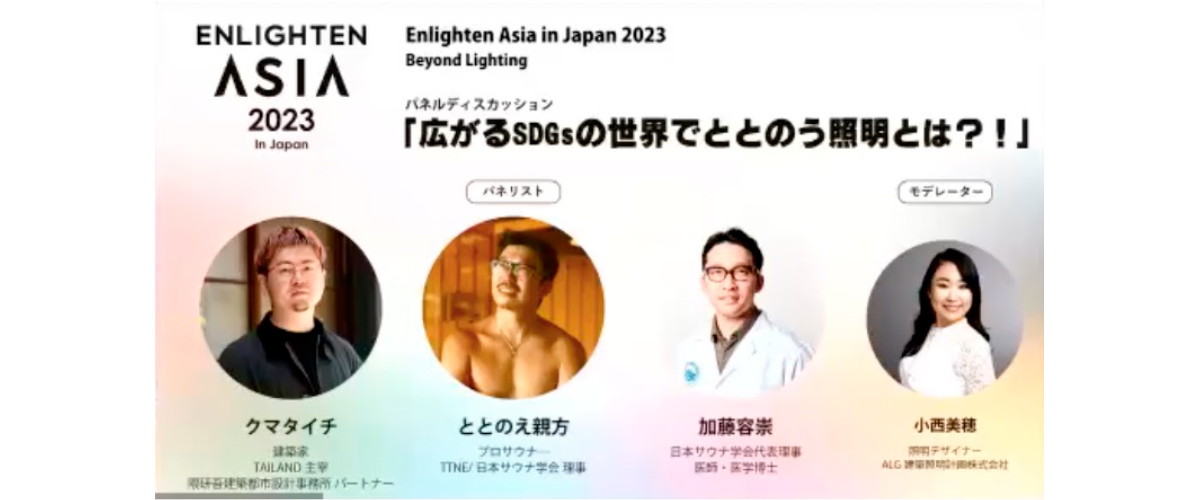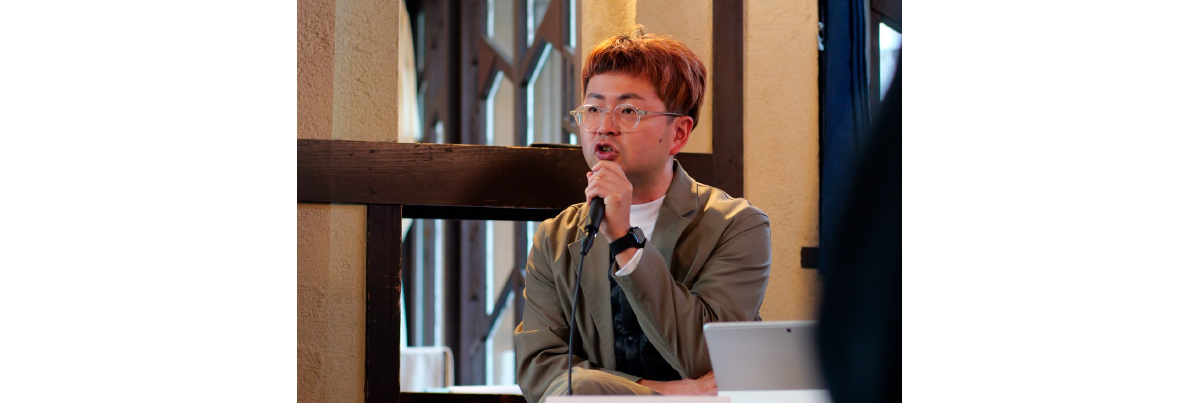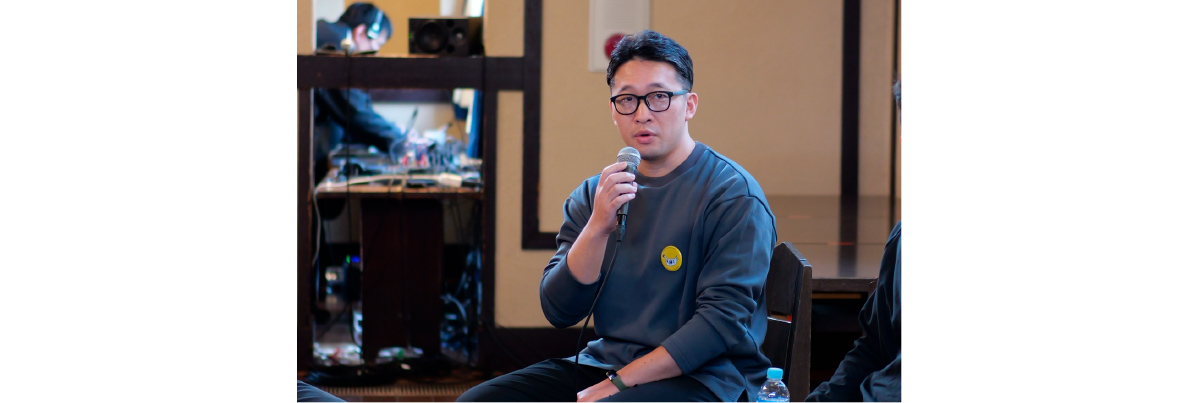SDGs
【S-6】What is ”Totonou” lighting in the expanding SDG world?
The word “totonou” is used in the context of Japanese sauna and bathing culture, meaning tempering harmony and balance of your body and soul. We welcome three panelists: Taichi Kuma, architect, Totonoe Oyakata (meaning a master of “totonou”), a sauna professional, and Dr. Yasutaka Kato, to explore how lighting design can contribute to achieving the state of “totonou,” and discuss the future of lighting in the SDGs’ goal year of 2030.

Following an introduction to the seminar, the moderator Miho Konishi starts by asking Totonoe Oyakata the definition of “totonou,” the effect you experience from a sauna. “It is, in fact, the way of enjoying saunas that is gaining popularity. You bathe in the sauna, immerse yourself in the cold plunge pool, and take a rest. ‘Totonou’ is the enjoyment of these moments,” Oyakata explains, depicting its effect as “rebooting, with the sense of starting your day anew, another refreshing morning.”
Taichi Kuma agrees, saying, “Saunas help you to listen to yourself. Sometimes you use the sauna to think about something and hit an idea, but if you overdo it, you’ll forget everything by the time you leave. Anyhow, it is somewhat of a rebooting experience.”

Dr. Yasutaka Kato explains from a medical point of view. “Very simply put, the effect of a sauna is a kind of shock therapy using a steep drop in temperature.” He continues, “Humans enjoy rollercoasters and emotional movies because we have a different mechanism from that of other animals. We enjoy drops and contrasting speeds because we know how deeply relaxing it is after we use our sympathetic nerves that activate in an emergency. We love the changes, that exceptional sense of refreshment in our bodies after we go through such steep drops as in saunas.”

In response to Konishi’s question about whether temperature and humidity are the keys to saunas, Dr. Kato says, “There are numerous parameters, including effective temperature, smell, and the lighting — our theme for the seminar.” In search for evidence of what lighting for “totonou” is like, and if the lighting is even effective, Dr. Kato conducted a demonstrating experiment. He explains the results: “Our autonomic nerves are heavily influenced by lighting conditions. What we find most calming is warm light of about 1800 Kelvin color temperature, such as reddish light during sunset. This was indicated in our experiment as statistically significant, an index to show the reliability of the difference, meaning 1800K light was the most efficient in settling our heart rates. Now it’s up to the designers’ tastes about where to put those 1800K lights, among spaces in the sauna, cold plunge pools, or relaxation rooms, but I suggest using them inside the sauna room or in the relaxation area where you unwind after you’ve done ‘totonou,’ for the calming effect.”

Then, Konishi asked Oyakata if he could name elaborate sauna spaces in terms of lighting. “Lighting inside sauna rooms overseas is well designed and there are plenty of different examples, but in Japan, I can name only a few,” he answers, as he encourages the participant designers of the seminar to unite and take on this blue-ocean market unitedly to stir it up and diversify lighting design in Japanese saunas.

Kuma, in response to the question “Is it possible to design a ‘totonou’ space using lighting?,” introduces his design of a sauna named “Sazae.” He says, “As this sauna was right next to the ocean, I first thought we could enjoy bathing with the view. But for a sauna, airbathing, or enjoying the air outside, was another important element. That’s why I gave up the view from inside and tried to take in light from the top.” According to Oyakata, who has bathed in this sauna, the architecture was “a surprise to all sauna followers in the world.” You feel light from the top in the interior, and while airbathing, you can sit back and relax with lights wavering on the wall of Sazae, cast from the adjoining cold plunge pool. This architectural project is the first sauna in Japan to involve a lighting designer and has become globally renowned.


Dr. Kato answers Konishi’s question about his application of the sauna to mindfulness following his experiment on lighting for “totonou.” He says, “In the context of lighting, SDGs, and mindfulness, saunas can be seen as a method for mindfulness.” He called for 80 subjects and measured their FFMQ, an index for mindfulness, which revealed their well-being indexes improved after using saunas. Dr. Kato points out that the results show the effect of saunas is not only mental, but it relaxes your body from the inside to make you mentally satisfied, which then leads to your well-being when you are fully aware of the effect.
At the end of the seminar, Konishi concluded, “Lighting culture in Japan has followed a unique path unlike that of other parts of the world. The emerging sauna culture nurtured within Japan shares something in common with the long tradition of our lighting culture and our sensitivity toward lights. I believe lighting design, when combined with saunas, can contribute to creating truly ‘totonou’ spaces and ultimately, the world of well-being”


